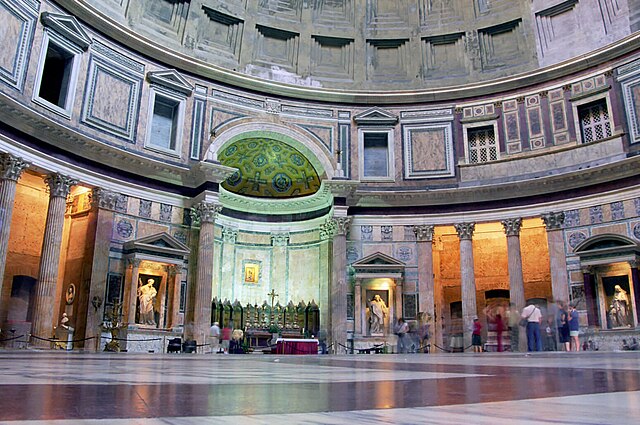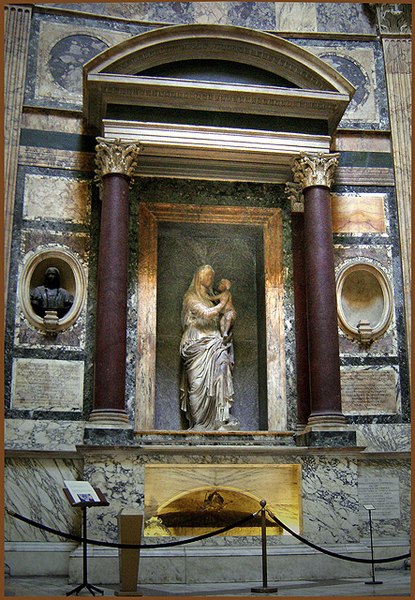The Pantheon is a former Roman temple and, since AD 609, a Catholic church in Rome, Italy. It was built on the site of an earlier temple commissioned by Marcus Agrippa during the reign of Augustus, then after that burnt down, the present building was ordered by the emperor Hadrian and probably dedicated c. AD 126. Its date of construction is uncertain, because Hadrian chose not to inscribe the new temple but rather to retain the inscription of Agrippa's older temple.
Facade of the Pantheon, with the Pantheon obelisk
Pantheon, Rome
The tomb of Raphael
The interior of the Pantheon
Ancient Roman temples were among the most important buildings in Roman culture, and some of the richest buildings in Roman architecture, though only a few survive in any sort of complete state. Today they remain "the most obvious symbol of Roman architecture". Their construction and maintenance was a major part of ancient Roman religion, and all towns of any importance had at least one main temple, as well as smaller shrines. The main room (cella) housed the cult image of the deity to whom the temple was dedicated, and often a table for supplementary offerings or libations and a small altar for incense. Behind the cella was a room, or rooms, used by temple attendants for storage of equipment and offerings. The ordinary worshiper rarely entered the cella, and most public ceremonies were performed outside of the cella where the sacrificial altar was located, on the portico, with a crowd gathered in the temple precinct.

The Maison Carrée in Nîmes, one of the best-preserved Roman temples. It is a mid-sized Augustan provincial temple of the Imperial cult.
The Temple of Hercules Victor, in the Forum Boarium in Rome, 2nd century BC; the entablature is lost and the roof later.
Roman temple of Alcántara, in Spain, a tiny votive temple built with an important bridge under Trajan
Temple of Augustus in Pula, Croatia, an early temple of the Imperial cult








